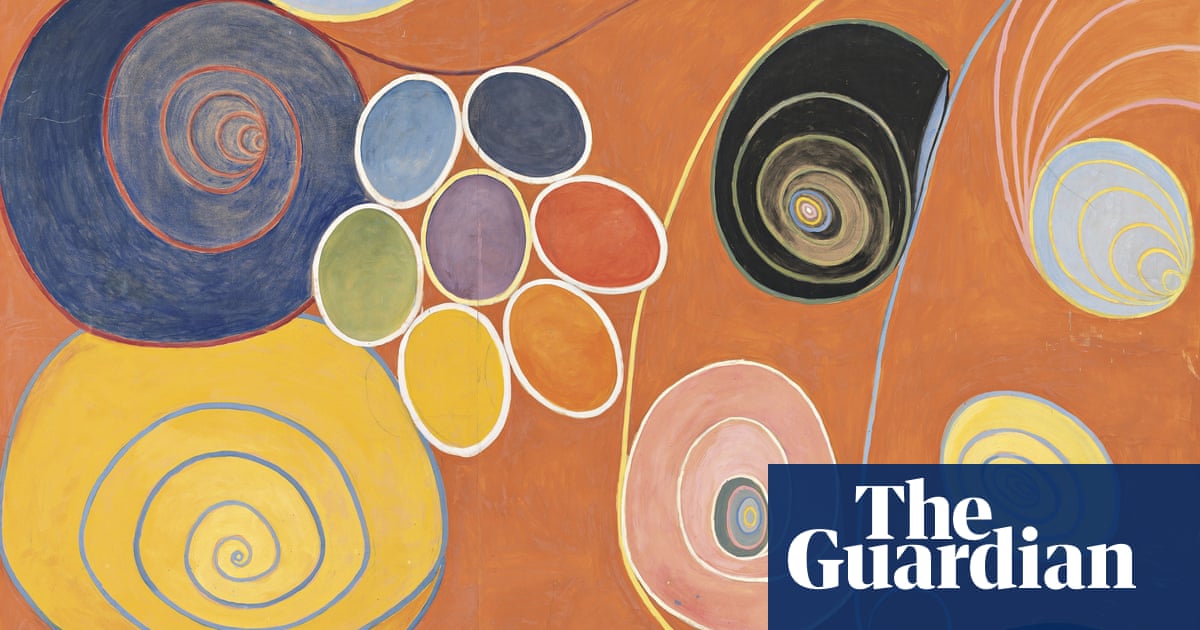
A bust by the first female black American to work as a professional sculptor went on show in the UK last week after languishing in a cupboard at a stately home for more than 100 years.
The work, a bust of Christ, was created by Edmonia Lewis (1844-1907) in her studio in Rome in 1870. Lewis was internationally renowned in her day but died in obscurity in London. She was buried in an unmarked plot in a Kensal Green cemetery, and for many years her story and knowledge of her sculpture seemed to have been buried with her.
Through the decades that followed, however, a piece of her work was sitting in a cupboard at Mount Stuart, a Gothic mansion on the Isle of Bute off the west coast of Scotland. The bust was bought soon after its creation by the 3rd Marquess of Bute, John Patrick Crichton-Stuart, who was an admirer of Lewis’s work.
“It ended up in a china cupboard, and there it remained until 2015,” says the marquess’s great-great-granddaughter Sophie Crichton-Stuart. By then Lewis’s work was attracting attention – especially in the US where she was born to an Ojibwa Indian mother and African American father.
Both her parents died when she was very young, and Lewis went to live with her mother’s family, where she was known by her Indian name, Wildfire. Her brother, Sunrise, became a goldminer, and paid for her to go to college. There, though, she was the victim of targeted racism when she was accused of trying to poison her white classmates. She was acquitted, but not before she had been beaten by vigilantes.
She moved to Boston to study sculpture, and started to produce busts of abolitionists: the sale of one of these, of Colonel Robert Gould Shaw, provided money for a passage to Europe, where her talents brought her to the attention of established sculptors such as Hiram Powers, and she rented a studio off the Piazza Barberini.
Rome was a centre of sculpture at the time, and Lewis worked in the white marble readily available in the city. Most sculptors of the period were surrounded by a team of assistants but, fearing she could be discredited if she did the same, Lewis chose to work alone.
The pieces she produced in Italy continued to reflect her African American and Native American heritage: one of her best-known works is entitled Forever Free, and depicts a man and woman emerging from slavery, shackles held aloft – it is now in the Howard University Gallery of Art in Washington.
At some point – it’s unclear whether this was in the US or Rome – Lewis became a Catholic, and she produced devotional pieces. Two of these caught the attention of the 3rd Marquess of Bute, who had scandalised Victorian Britain when he converted to Catholicism at the age of 21. “The second piece, a Madonna and child, has disappeared from the collection, probably destroyed in a catastrophic fire in 1877,” says Mount Stuart’s curator Jessica Insley. “But the bust of Christ remains, and is one of only two pieces of Lewis’s work in the UK [the other is a bust of the abolitionist poet Henry Wadsworth Longfellow at the Walker Art Gallery in Liverpool]. It’s a northern Renaissance-style Christ, and it’s important from an art historical perspective because so little of her religious work survives.”
Crichton-Stuart believes that, though her ancestor came from a background of extreme white privilege, he identified with Lewis’s “outsider” status because of his Catholicism. He was also a supporter of women’s rights: he once threatened to resign as rector of St Andrews University unless women were admitted to its medical school. “He refused to conform to expectations. He didn’t hunt or fish, as aristocrats often did – he was an intellectual and he clearly appreciated and admired Lewis’s work,” she says.
Lewis made regular trips back to the US from Rome, taking pieces of her sculpture to American galleries. In 1876, the work widely regarded as her finest, The Death of Cleopatra, was included in the Philadelphia centennial exhibition, with one reviewer calling it “the most remarkable piece of sculpture in the American section” of the show. It was then lost for a century before being rediscovered in storage in Chicago. Today it sits in the Smithsonian in Washington.
At some point – it’s unclear whether this was in the US or Rome – Lewis became a Catholic, and she produced devotional pieces. Two of these caught the attention of the 3rd Marquess of Bute, who had scandalised Victorian Britain when he converted to Catholicism at the age of 21. “The second piece, a Madonna and child, has disappeared from the collection, probably destroyed in a catastrophic fire in 1877,” says Mount Stuart’s curator Jessica Insley. “But the bust of Christ remains, and is one of only two pieces of Lewis’s work in the UK [the other is a bust of the abolitionist poet Henry Wadsworth Longfellow at the Walker Art Gallery in Liverpool]. It’s a northern Renaissance-style Christ, and it’s important from an art historical perspective because so little of her religious work survives.”
Crichton-Stuart believes that, though her ancestor came from a background of extreme white privilege, he identified with Lewis’s “outsider” status because of his Catholicism. He was also a supporter of women’s rights: he once threatened to resign as rector of St Andrews University unless women were admitted to its medical school. “He refused to conform to expectations. He didn’t hunt or fish, as aristocrats often did – he was an intellectual and he clearly appreciated and admired Lewis’s work,” she says.
Lewis made regular trips back to the US from Rome, taking pieces of her sculpture to American galleries. In 1876, the work widely regarded as her finest, The Death of Cleopatra, was included in the Philadelphia centennial exhibition, with one reviewer calling it “the most remarkable piece of sculpture in the American section” of the show. It was then lost for a century before being rediscovered in storage in Chicago. Today it sits in the Smithsonian in Washington.
Lewis left Rome for Paris in 1896, where she spent five years before moving to London. Her revival in Scotland owes much to the work of the Scottish-Ghanaian artist Maud Sulter (1960-2008), who championed Lewis’s work.
The bust is on show in the entrance hall to Mount Stuart, which will host an online round table on Lewis and her work on 22 October as part of Black History Month Scotland.












